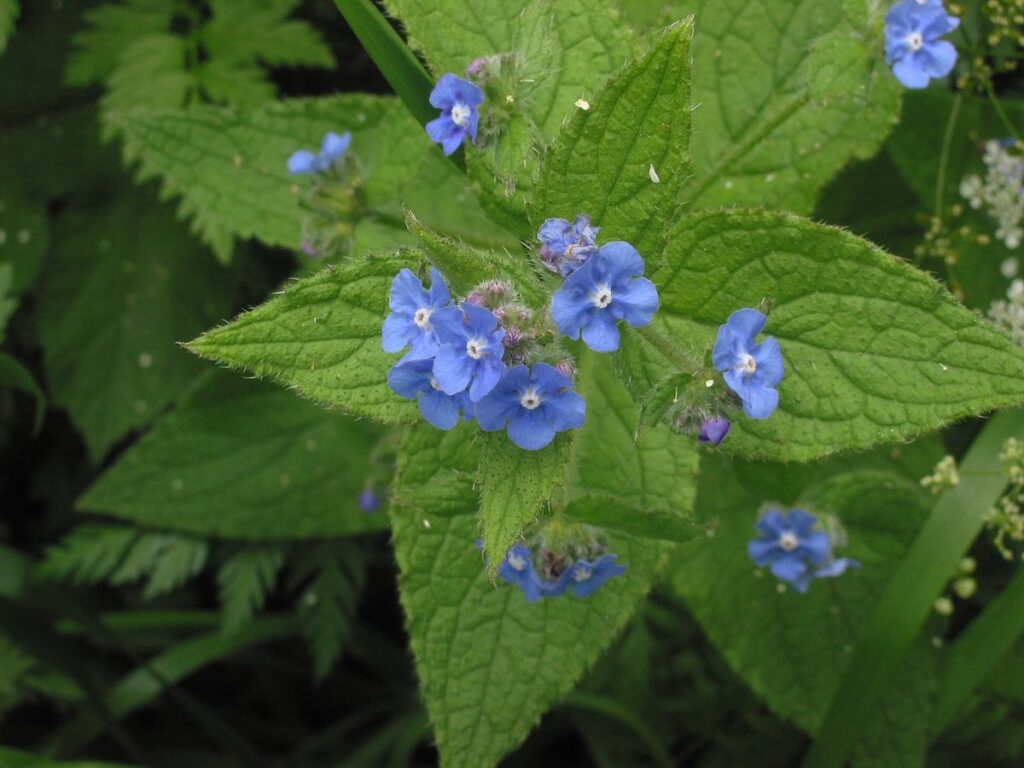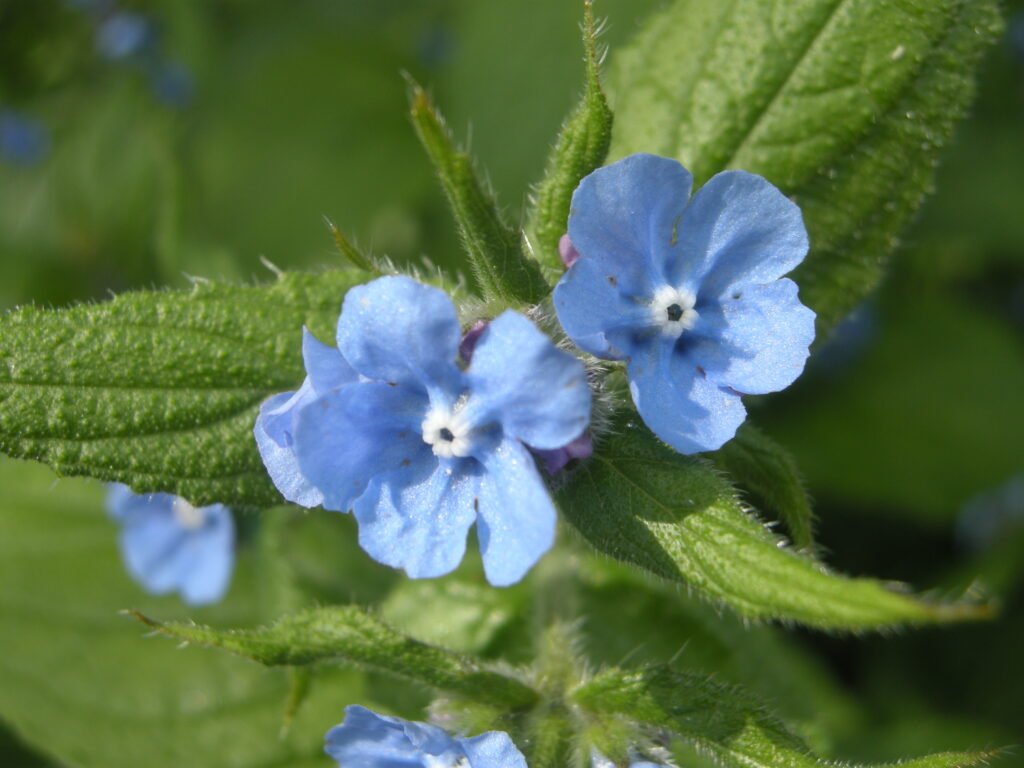This lovely perennial wildflower blooms in spring and early summer. It is a member of the forget-me-not family, Boraginaceae, and is related to the borage family. It is found in a number of regions and can grow into sizeable colonies but only if it has a lot of space and good conditions for growth.
Appearance
Growing up to 24-36 inches tall, the bristly plant can be easily identified by its white eye at the centre of a blue flower. The leaves are hairy and spade-shaped.

Where To Find Green Alkanet
Pentaglottis sempervirens, also known as common alkanet, evergreen bugloss or simply alkanet, is a common garden weed that can be found worldwide and is especially common in Europe.
It prefers damp and shady places, preferably close to buildings, but will grow in other environments. The plant grows well in sandy, moist soil. It is also found beside streams and at the edges of ponds and marshes.
The plant has a shallow root system that allows it to grow in dry soil; however, it can only do so for a short time before it begins to suffer from the lack of moisture.
Although an introduced species to the British Isles, it is often considered to be native to areas where it grows wild. It reproduces both by seed and vegetatively through its rhizomes.
There is no record of the botanical origin of Pentaglottis sempervirens, although it is evidently a native wildflower of southwest Europe from which it has spread to other parts of the world, particularly North America and Australia.
Can You Eat Green Alkanet?
The plant has been used as a food source for centuries and is still used in traditional food recipes all across Europe.
Although you can eat these plants, which were previously thought to be safely edible, it is not recommended as it has recently been found to contain carcinogens.

What Is Green Alkanet Good For?
Different species of the green alkanet plant have been used for many years as a dye. The roots can be used for a yellow dye and the leaves for an orange colour. Green alkanet is a popular ornamental plant because it can also be used as a dye for fabric or wool. A natural source of acid that helps break down fat stains from fabrics, the green alkanet should not be used on silk or woolens or any other delicate materials since it contains chloroform which could damage the fibres.
It was also used in the past as a medicine to treat wounds, sore throats, and stomach problems.
In recent years, several species of green alkanet have been grown in herb gardens because aromatic oil from the roots is said to repel insects when rubbed on skin or clothing.
The flowers of green alkanet are visited by a wide range of pollinating insects, including honey bees, bumblebees, mason bees, hoverflies, several species of butterflies, and caterpillars of the scarlet tiger moth. The flowers also attract moths such as the Flame shoulder, Double-striped pug and the Marbled beauty.
How To Get Rid Of Green Alkanet
Considered a weed by many, pentaglottis sempervirens, can be eradicated from a garden without much difficulty. The stems are long on these plants, so you can easily pull them out of the ground, but be sure to wear gloves. Also, the tap root for this plant is long and thick, be sure to dig up any excess because any leftovers will sprout up again before you know it.
Sam loves to learn about animals and their habitats. He has been a nature lover from a very young age, and has been writing papers and articles about wildlife for as long as he can remember.

Thank you for this info. I’ve been looking for any articles that discuss green alkanet because I appear to have an allergy to it.
Initially it caused skin irritation when I found it in my garden over a decade ago. With each year I removed as much as I could by pulling and root removal. That has slowed down it’s regrowth so it’s not invaded any new areas in the garden.
Two days ago I did some general weeding, wearing gloves, but didn’t pull the green alkanet because it’s still flowering, and the bees love these. Each time I brushed past it, I was aware of the feeling like touching nettles, so made care to avoid it.
By the time I came indoors I was itching and it was worse than ever before. The areas on my skin that it touched are now becoming increasingly red, swollen and hard. This is also spreading and in a few areas my skin has broken due to scratching or not as this happened overnight.
As this is still getting worse, I’ll call my GP for advice, but as I’m already using anti- histamines, don’t know if he’ll be able to help. I’ve a severe allergy to chromium, but searching the internet has failed to provide me with any suggestion what chemicals this plant contains.
I’ll remove it from the garden this weekend, being careful not to let it touch my skin. Thought it should be removed in spite of bees’ liking it so much as my allergy is clearly becoming increasingly severe
Thank you Clare for sharing your experience with green alkanet and your allergy symptoms. It’s unfortunate that you’ve been experiencing such discomfort. Seeking advice from your GP is a good step, and they may be able to provide guidance on managing your symptoms. Removing the plant from your garden while taking precautions is a wise decision considering your increasing allergy severity.